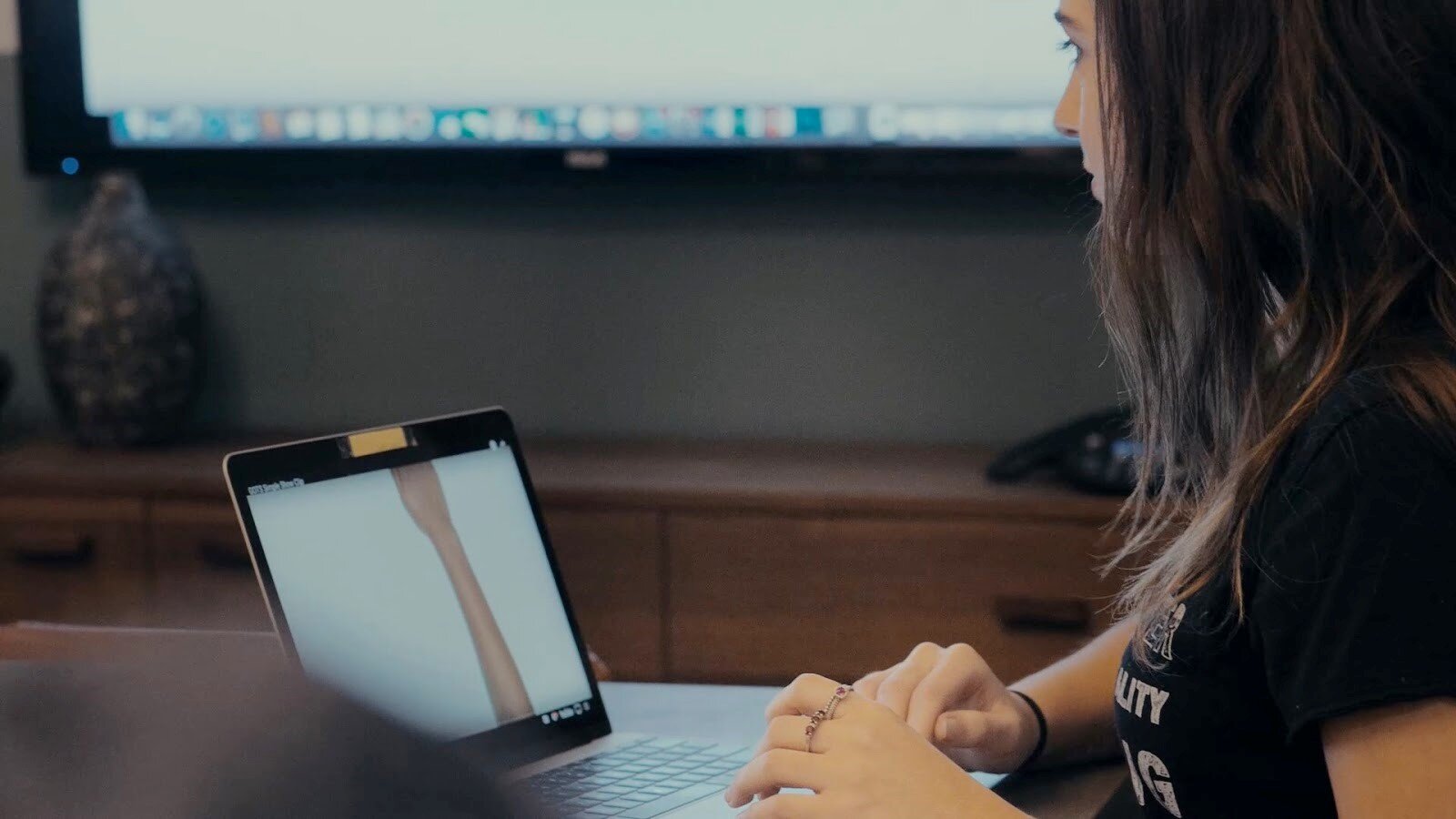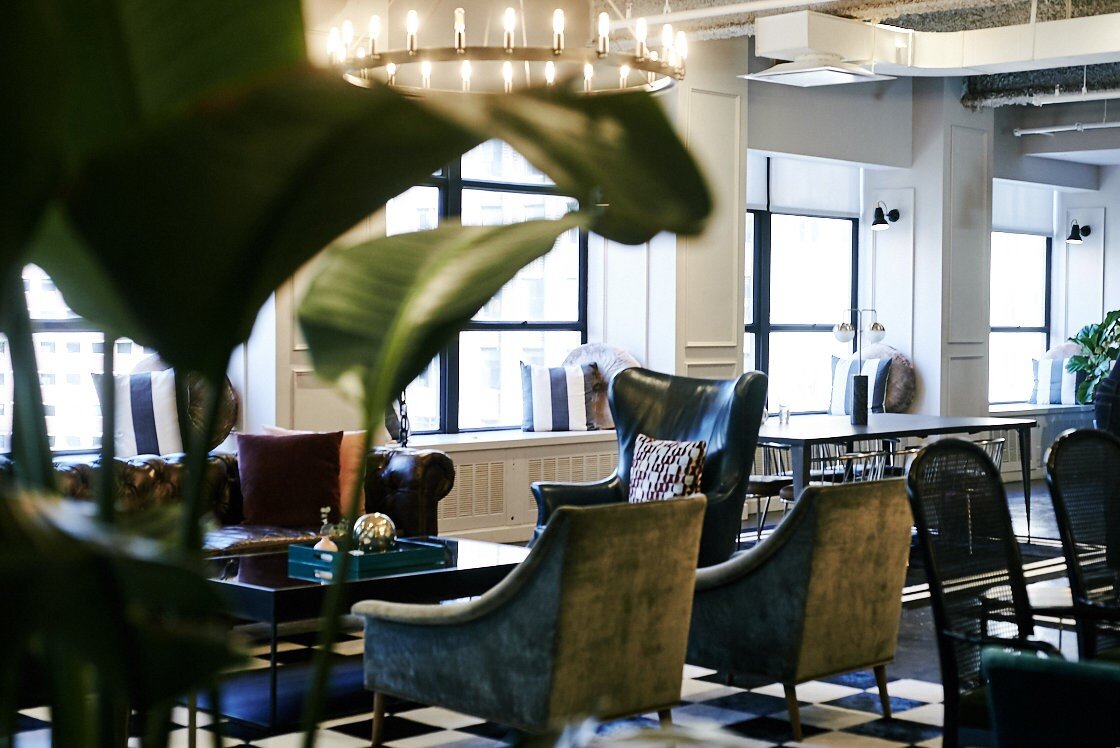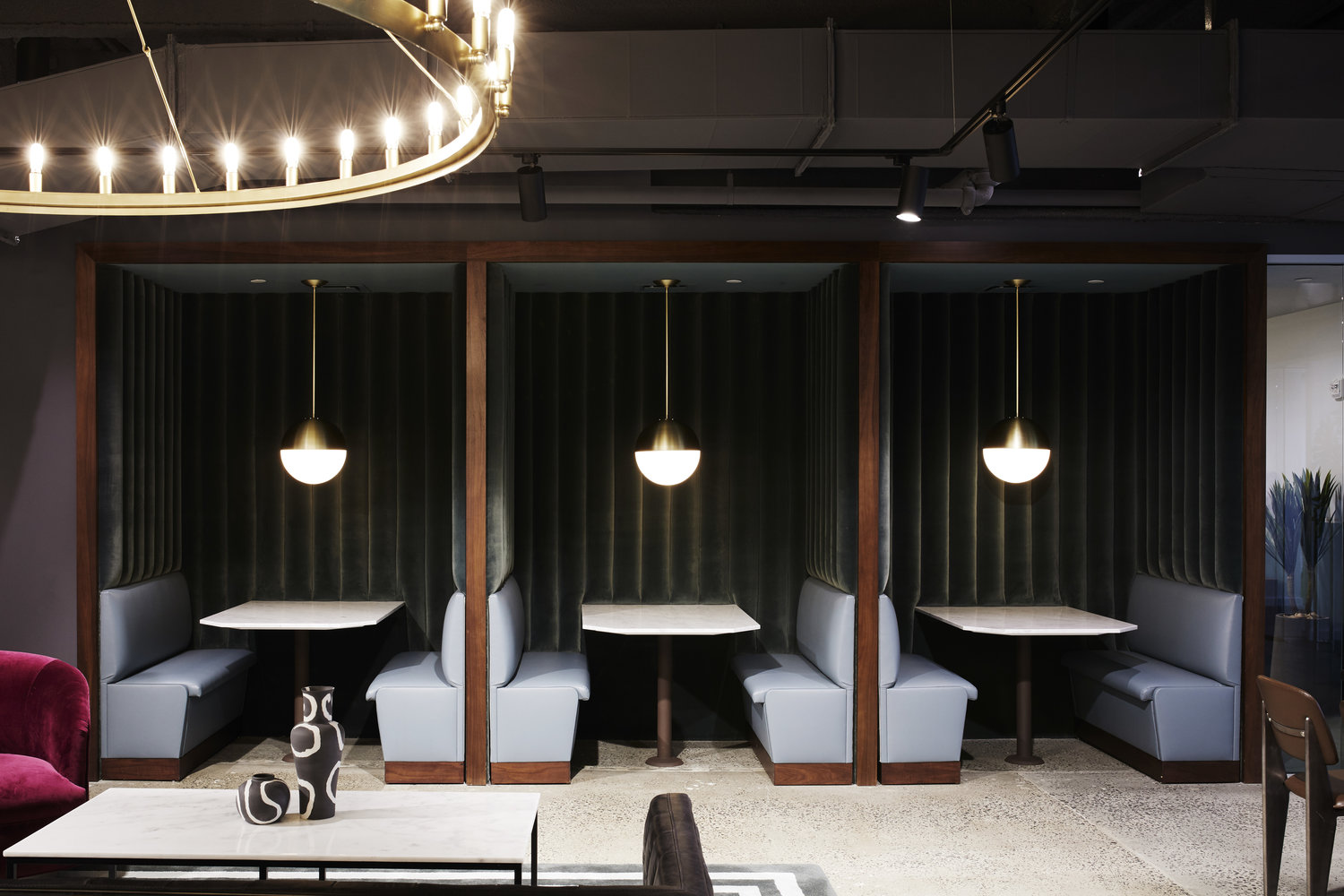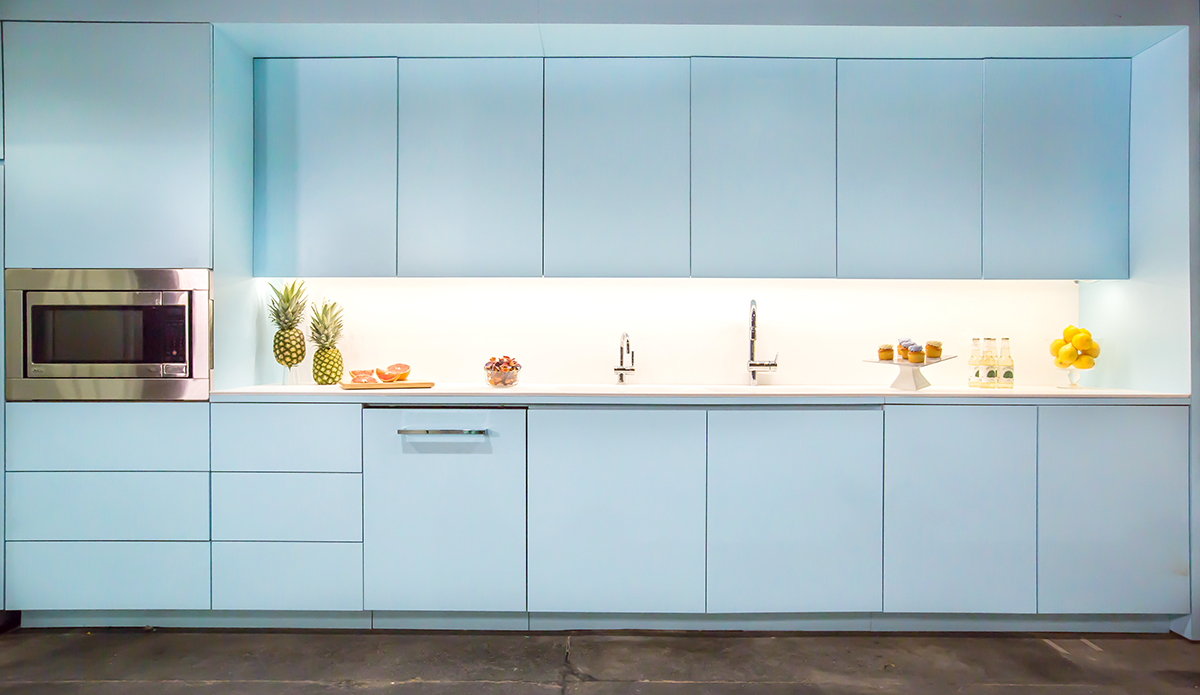By Bond Collective Staff
The modern office space truly is a thing of beauty. Gone are the endless rows of cubicles that made employees feel like rats in a maze (or a cage). They’ve been replaced by expansive spaces, vibrant colors, and natural lighting and materials.
This shift from closed to open office design has had a profound effect on the happiness, productivity, and creativity of employees in modern offices everywhere. Not to mention providing a significant wow factor for the clients who visit these modern works of architectural and design art.
But how do you go about transitioning from a more traditional, closed office environment to a new, modern office space? In this article, the experts at Bond Collective will tell you everything you need to know about designing the perfect office for you, your team, and your clients.
What To Strive For When Creating A Modern Office Space
We’ll address some specific suggestions for designing a modern office space in the next section.
In this section, though, we’ll give you the broad strokes of what a modern office space should look like, how it should feel, and the effect it should have on those who spend their time there.
1) Stimulates Creativity, Collaboration, And Communication
The three Cs of business — creativity, collaboration, and communication — are a set of behaviors that all managers strive to promote in their team members. When the three Cs permeate everything your employees do, the result is high-quality work.
There are many ways managers and business owners can stimulate creativity, collaboration, and communication, but one of the most effective is through the environment in which their employees work.
You can stimulate creativity by incorporating bright colors into your design elements. Whether it’s a theme that extends throughout your office space or just splashes of color here and there, bright tones can elevate your employees’ creativity and help them work better.
Similarly, you can promote collaboration and communication through the arrangement of desks, furniture, and technology. As we mentioned earlier, we’ll delve into the details of this concept in the next section.
But it goes without saying that cubicles and private offices do not lend themselves to the type of collaboration and communication that you’re looking for.
2) Reduces Stress And Anxiety
In addition to stimulating the three Cs, modern office spaces should also serve to reduce stress and anxiety.
For example, industrial design elements — such as exposed metal, unfinished stone, and sharp corners — have their place as an aesthetic. But used too much, they can give your team members the sense that they are just a cog in a much larger machine.
That in itself can cause stress and anxiety to flourish.
We’re not saying you have to avoid industrial design elements altogether — some of our favorite office spaces have industrial components — but, rather, that you should temper their effects with softer, more inviting components like cushy couches, overstuffed chairs, and a more natural color palette (e.g., greens, blues, yellows, etc.).
These appealing elements help to reduce the stress and anxiety that the fast pace of modern business tends to promote.
3) Allows Team Members To Focus And Concentrate When Necessary
As we mentioned above, a modern office space should promote collaboration and communication. But there’s a fine line between just the right amount of collaboration and communication and too much.
Your team members also need a place to focus and concentrate on their own or in small groups. Your workspace should provide for this necessary activity. If it doesn’t, you run the risk of alienating the segment of your workforce that needs to be quiet and still to get things done.
At first glance, this may seem at odds with the idea of stimulating collaboration and communication. But, in reality, it’s the opposite side of the coin.
Through collaboration and communication, your employees refine the big ideas. Then they need to dig into the details by themselves to truly understand where the concept is going.
As such, your office should provide space for both of these activities to occur simultaneously. That way, your team members can transition from each activity when the need strikes them without affecting anyone else.
4) Portrays A Professional Image For Clients And Customers
While certain areas of your office space may be whimsical, strange, or just plain chaotic, other areas should portray a professional image for visiting clients and customers.
Typically, this means that you should design the front-facing areas — such as reception, visitor’s lounge, and conference room — in a more clean, uncluttered, and professional manner.
Then, when a big client comes to visit, you’re not scrambling around trying to tidy up the busy collaboration space in order to convey the refined image your company needs.
Separating these two distinct areas — client-facing and employee-facing — and designing them to be functional, user-friendly, and professional is key to making the best impression possible on those who visit your business.
5) Incorporates Biophilic Design
More and more modern office spaces are incorporating natural elements — also called biophilic elements — into their design aesthetic.
Biophilic design revolves around the premise that humans have an inherent need to connect with nature. When they make that connection, they enjoy better health, heightened concentration, increased creativity, and improved work performance.
There are many ways to add biophilic design to your office space. The easiest and most effective are:
-
Natural materials such as wood and stone
-
Natural light through large windows or glass ceilings
-
Plants that convert carbon dioxide into oxygen and purify the air
-
Running water like fountains, streams, or waterfalls
-
Views of nature through windows or even via paintings and pictures
Though some design elements (like running water and large windows) may not be practical in all cases, the other biophilic components are fairly simple to include in your modern office space.
6) Feels Like Home
Another excellent way to inspire your team to greatness is to design their workspace so that it feels like home. This doesn’t mean dirty dishes in the sink, clothes on the furniture, and empty pizza boxes on the table. Rather, it means that the office space is physically and mentally comfortable.
Including bright and comfortable furniture, a ping-pong table in the lounge area, and even a recreational swing or slide can make the modern office space more relaxing and stress-free.
These elements give team members a way to take short breaks to give their bodies and minds time to rest, recharge, recover, and remain productive throughout the day.
At the same time, employees can use these “homey” areas to collaborate with their coworkers or discuss work-related problems. It gives the activity a relaxed feel — like you’re shooting the breeze with a friend after a hard day’s work — that can make people feel more comfortable, creative, and open to new ideas.
Now that we’ve discussed the general issues of workspace design, let’s drill down to some specific examples of how you can get the most out of your modern office space.
Three Key Components Of The Modern Office Space
We’ve simplified the process of designing a modern office space by dividing it into three essential categories:
-
Technology
For each key element, we’ve provided four tips to help you develop an up-to-date office space that reflects your particular brand.
1) Workspace
Allow For Variety And Flexibility
New, modern office spaces allow for a variety of different work environments. Think of these environments as subdivisions of your larger space. You’ll need places for quiet work, places for collaboration, and places for socialization.
You can further improve your workspace by encouraging layout flexibility. Modular furniture gives your team members the option to rearrange an area to suit their needs at the moment. That makes for a much more hospitable environment.
Incorporate Active Furniture
The variety and flexibility you plan for in your workplace writ-large extend all the way down to the individual pieces of furniture you choose. For a happier, healthier team, incorporate active furniture instead of relying solely on your standard desk and chair setup.
Active furniture includes the likes of ergonomic chairs, pedestal stools, saddle chairs, adjustable-height desks, and even treadmills and bike chairs. Having a variety of seating and work-surface options allows your team members to change positions often and helps them avoid the physical strain that comes with sitting for eight hours every day.
Tame The Noise
When planning a modern office space, sound reduction should be a primary concern. Large, open spaces are notoriously noisy and can seriously affect your team’s productivity.
You can minimize this problem by using sound-abatement tools, such as:
-
Soft furniture (e.g., fabric couches and chairs)
-
Acoustic ceiling and wall panels
-
Curtains
-
Quiet keyboards
-
Vinyl flooring (rather than natural wood or ceramic tile)
-
Noise-canceling headphones
Any (or all) of these options will significantly reduce the noise pollution common to large, open office spaces.
Add Outdoor Spaces
Don’t forget outdoor spaces when planning your office design. If you have access to a patio, balcony, roof, or other open-air environment, furnish it with chairs, small tables, and maybe a bean-bag-toss game or two.
These outdoor spaces give your team members a change of scenery and allow them to get some fresh air and recharge their batteries. They also make for great meeting and collaboration areas.
2) Technology
Ensure Data Access Anywhere In The Office
Modern office spaces are built around the idea that team members should be able to work wherever they want. That means that they need to have access to their work (their data) anywhere they go in the office.
From a design perspective, it means providing a strong Wi-Fi signal in every nook and cranny, and ensuring that there are plenty of Ethernet ports (Cat5/Cat6) everywhere work might be done.
Go Wireless
The wireless concept extends to more than just working with Wi-Fi. It incorporates such things as:
-
Wireless charging solutions
-
Cords hidden within walls, floors, and trays
-
Recessed power outlets built into desks and tables
-
Cordless phones
-
Bluetooth headsets
All of these solutions can reduce the clutter of a large, open office and give team members more flexibility over where they choose to work.
Provide Collaboration Tools
The right collaboration tools can make or break your team’s productivity. A whiteboard and colored markers aren’t enough anymore. Now, modern offices are incorporating smart boards (digital whiteboards), wireless projectors, and touchscreen displays and presentation monitors to make collaboration easier.
The importance of collaboration even extends online. Cloud-based group apps allow everyone on your team to work together on the same project regardless of what device they’re using — or even where they’re located in the office.
Support A Wide Variety Of Devices
When choosing the technology for your modern office space, be sure to provide support for a wide variety of devices. Some of your team members may prefer to work on a desktop. Others may prefer to work on a laptop. Still others may do their best work on a tablet or mobile phone.
Regardless of the device your employees choose, or even if they choose to use all three throughout the day, the transition from one to the other should be as seamless as possible. If it’s a hassle to go from desktop to tablet, productivity will suffer.
3) Team Members
Give Team Members The Freedom To Work Anywhere
From day one in your new modern office space, give team members the freedom to work anywhere in the office that suits them. That may mean that one day they spread out in the lounge, the next day they isolate themselves at a desk, and the next day they sit on the floor in a corner.
Some team members may even work in all three of the above spaces in the span of three hours. As long as they’re being productive, it shouldn’t matter where your employees work.
Focus On Wellness
Your modern office space should contribute to the health and wellness of your employees. Remember, a healthy team member is a happy and productive team member.
Stock the pantry with healthy foods. Move the furniture to make room for yoga classes. And offer in-office kitchen events where team members can whip up a meal and eat together. These and other wellness practices can help keep your team members more focused on and engaged in the work at hand.
Train Employees To Work Differently
Assigned seats and workstations are the norm in most schools and traditional office environments. However, in the modern office space, team members may not have a desk that’s all their own.
Instead, employees are encouraged to use the different areas of the office for different purposes (collaboration, focus/quiet, socialization, etc.). But because the idea of an assigned seat is so ingrained in our behavior, you may need to train your employees to work differently.
Make it a part of your onboarding process to show new employees how they can use each unique area of your office and to help them see that they don’t have to sit at the same desk every day to be productive.
Preserve The Traditional Office For Certain Jobs
Certain jobs demand a more traditional office space. You don’t want your CEO and VP formulating strategies and conducting private business for everyone to see and hear.
Similarly, you don’t want your sales team (who are always on the phone) to disturb the creativity and focus of your other teams. That’s why private offices and separate, dedicated spaces for certain positions are still necessary even in today’s modern office design.
Obtain A Modern Office Space Without All The Work
Designing a modern office space is a lot of work. It takes planning, forethought, imagination, and time — commodities that might be exhausted keeping your business and your teams running smoothly. But you don’t have to start from scratch.
Bond Collective has created several boutique coworking environments that are available immediately for businesses of all sizes. In addition to our unique office settings, members also enjoy amenities like:
-
Private-label mail service
-
Daily on-site cleaning
-
Custom build-outs
-
Guest reception and greeting
-
Insanely fast Wi-Fi
-
24-hour access
-
Concession food market
-
Bike storage
Visit any one of Bond Collective’s many locations in the United States, including workspaces in New York, Pennsylvania, Washington D.C., Illinois, Tennessee, and Texas. Then become a member of Bond Collective and take advantage of our coworking spaces, dedicated desks, and private offices to suit all your business needs.
To get started or to learn more about the advantages of coworking spaces for digital nomads, remote workers, and businesses of all kinds, visit BondCollective.com today.








